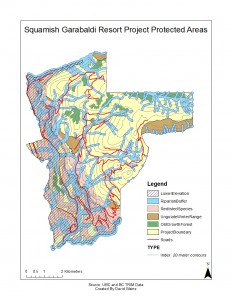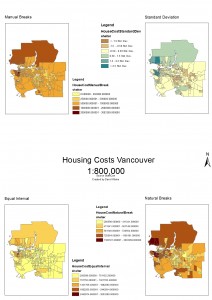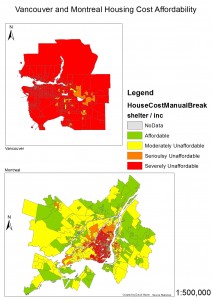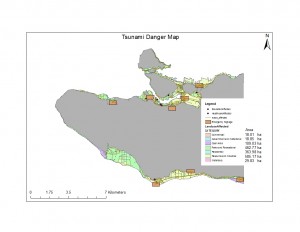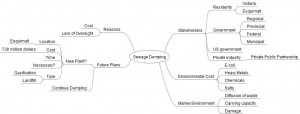Assignment 2 GEOG 310
Annotated Bibliography Technology and Cost in relation to the sewage treatment problem of Victoria.
Zhang , XiaoHong et al. (2015). The comparison of performances of a sewage treatment system before and after implementing the cleaner production measure. Journal of Cleaner Production 91, 216-228
This article was found from the Journal of Cleaner Production. The basis of this article is to determine the performance of enacting cleaner production practices in a sewage treatment plant in Beijing, China. The study compares the efficiency of the plant before and after implementation of the practices. It determines the change in carbon/nitrogen ratios in the system and how phosphorus and nitrogen removal is affected through these changes. This studies scope is limited to pre-treatment, primary treatment, secondary treatment and sludge thickening so as to compare the performance changes before and after the cleaner production measure being implemented. This article is relevant to the wicked problem in Victoria due to being around the topic of sewage treatment. It evaluates how changes in processes can improve sewage processing quality and effectiveness which must be considered when evaluating potential solutions to Victoria’s sewage problem. This source is a peer reviewed journal with an impact factor of 3.59. Based on that information I believe this source to be trustworthy.
Caporgno, M.P. et al. (2015). Biogas production from sewage sludge and microalgae co-digestion under mesophilic and thermophilic conditions. Journal of Cleaner Production 75, 374-380
This article demonstrates the differences that substrates and temperatures can make on biogas production in biogas digesters in sewage treatment. The researchers look at two bacterium and how they perform when co-digested under mesophilic and thermophilic conditions. They then compare the differences in biogas production and percentage of methane produced. This study is relevant in that it addresses different regimes in biogas production that could increase productivity in a biogas digester. One potential system that may be incorporated in Victoria would include a digester to process sewage sludge instead of landfilling the bio-solids. This would also produce biogas which could be used to generate energy, waste to energy processing. This source comes from the same journal as the article previous.
Clarke, Bradley O. Smith, Stephen R. (2011). Review of ‘emerging’ organic contaminants in biosolids and assessment of international research priorities for the agricultural use of biosolids. Environment International 37 (11), 226-247
In this article the authors attempt to study the presence of organic compounds in biosolids resulting from waste water treatment. Many of these organic compounds may be harmful to human consumption. The reason behind this study is to determine if biosolids may be used in agricultural practices. They rank compounds based on their environmental persistence, human toxicity and any evidence of bioaccumulation in humans or the environment. The authors rank several chemicals in decreasing priority and evaluate each one based on international research available. This study is of significant importance because it helps inform stakeholders on the potential risks of letting untreated sewage flow into the environment. Also it may present an alternative to landfilling of biosolids if removed during secondary treatment, the biosolids could potentially be used in agricultural settings. This article was published in a peer reviewed journal Environment International with an impact factor of 5.66.
Brisolara. Fitzmorris, Kari. Qi, Yinan. (2015). Biosolids and Sludge Management. Water Environment Research 87(10), 1147-1166
This is a review of several articles present in the literature on biosolids and sludge management. The authors look at the literature available on waste treatment breaking them down by categories. The categories are, biosolids regulations and management issues; biosolids characteristics, quality and measurement including microconstituents and pathogens, sludge treatment technologies including pretreatment and sludge minimization, conditioning and dewatering, digestion, composting and innovative technologies; disposal and reuse including combustion/ incineration, land application and non- agricultural use; odor and air emissions; as well as energy issues. This provides an excellent review and summation of available peer reviewed literature on the subjects mentioned. All the information provided gives a broad over view of the best methods available for treatment and what could be potential applications for the situation in Victoria. This article was published by the journal Water Environment Research.
Wastewater treatment. (n.d.). Retrieved October 14, 2015, from http://www.fao.org/docrep/t0551e/t0551e05.htm#TopOfPage
This is an agency report produced by the Food and Agricultural Organization of the United Nations. This report provides an overview of wastewater treatment processes. It explains the problems generated by waste and the general overview of conventional treatment processes. The report delves into further detail of every step of conventional waste water treatment processes, primary, secondary, and tertiary treatment. Further it provides information on natural biological treatment processes. The report is an excellent overview of waste water treatment that can be used to educate stakeholders and increase information around the problem. The Food and Agricultural Organization of the United Nations is an international organization belonging to the United Nations and such I consider it to be a trustworthy source of information.
Hopper, T. (2013, November 1). Is a $783M Victoria sewage plant necessary or the ‘largest boondoggle in Canadian history’? Retrieved October 14, 2015, from http://news.nationalpost.com/news/canada/is-a-783m-victoria-sewage-plant-necessary-or-the-largest-boondoggle-in-canadian-history
A news article published in 2013 from the National Post online. The article looks at those who support and those who oppose the construction of a sewage treatment plant in Victoria. The reason I have chosen this source is simply because it discusses the monetary cost associated with the construction of said plant. The article states an estimated cost of 783 million dollars Canadian. This would potentially increase tax rates for residents between 250-400 dollars per year. This is a relevant article in that it shows the potential monetary cost of building a treatment plant. The cost of technology must be taken into consideration when choosing a solution to Victoria’s sewage problem. Considering this is an editorial news piece I take the information presented with some doubt in mind. The author could potentially be biased.
Environment Canada. (2011). Human Activity and the Environment: Table 4.3 — Top ten substances released to water according tothe National Pollutant Release Inventory, 2009. Retrieved from Statistics Canada website: http://www.statcan.gc.ca/pub/16-201-x/2012000/t014-eng.htm
This data table shows the amount of pollutants released into water according to an Environment Canada Report. The pollutants are listed in descending order from greatest amount. It presents the data in both total amount released in tonnes as well as what percentage of total pollutants released each pollutant makes up. This data is relevant as it provides data showing what chemicals and heavy metals are potentially released into the waters surrounding Victoria if no treatment of the sewage outflow takes place beyond the primary level. This data is provided by Environment Canada and as a government source I find it reputable and trustworthy.
2011 Municipal Water Use Report – Municipal Water Use 2009 Statistics. (2011). Retrieved October 14, 2015, from https://www.ec.gc.ca/doc/publications/eau-water/COM1454/survey8-eng.htm
The tables presented in this report show the percentage of municipalities across Canada that treat wastewater and at what level, primary, secondary, tertiary. These tables are relevant because it shows that Victoria is not the only location with solely primary sewage treatment. Many locations in Canada are only served by primary sewage treatment systems. The data presented here can help determine whether technology is necessary beyond that which is already deployed and whether the costs associated with that technology is necessary.
